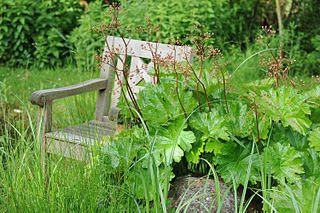From Guest Blogger Lizzie Weekly: Going Green — Five Home Maintenance Tips to Make Your House Cleaner and More Sustainable

1. Trim Your Trees
Believe it or not, your landscaping can drastically affect the efficiency of your heating and cooling systems. Just trimming the lowest branches of your shade trees opens up space for air to circulate through your property, so you can take advantage of cool summer breezes.
If you are up to a bigger renovation, consider adding more shade trees to your yard or creating a windbreak. Shading your home with deciduous trees or climbing vines can reduce your energy usage by reducing direct light exposure during the hottest hours of the day.
In the winter, a windbreak made of dense evergreen trees or hedges can reduce the wind chill in your yard, keeping your heat usage level, even during harsh winter gales.
If you live in an area with extreme winters and summers, avoid creating too much shade or setting up a permanent windbreak like a fence. Dark shade will make it harder to heat your home in the winter so avoid creating dense shade you can’t move. Deflecting wind regulates wind chill in the winter, but it may increase the average temperature in your yard in the summer so place your windbreaks carefully.
Evaluate your property to decide which changes will be most beneficial. Tweaking your landscaping is a simple way to reduce your energy costs for years to come.
2. Update Your Water Fixtures
Changing a few (or all) of your water fixtures to more efficient models conserves water and can save you money on your monthly bill. Michigan.gov recommends replacing these fixtures:
- Toilets: The standard gallon per flush (gpf) rate for toilets made before 2002 is 3.5 gpf or higher. Switching to a more efficient model (which uses only 1.6 gpf) could save you 54 to 77% on your water usage, depending on the gpf rate of your current toilets.
- Showerheads: The average showerhead uses 4.5 to 8 gallons per minute (gpm). Low-flow showerheads only use 2.5 gpm, without a reduction in water pressure. These fixtures cost between $15 and $30, making them a cheap option for water conservation.
- Faucets: You don’t need to replace all your faucets to save water and energy; simply repairing a leak that wastes a drop of electrically heated water every five seconds can save 400 gallons of water and 85 kilowatt-hours of electricity every year.
3. Maintain Your Heating and Cooling Systems
Most homeowners could not go without their heater in the winter and their air conditioning in the summer. Luckily, you can save money on heating and cooling without sacrificing climate control altogether.
Keep your unit clean of dirt and grime and change your filters regularly to reduce your power consumption. Replacing an old filter with a new one can reduce your AC’s energy usage by 5 to 15% (source: Energy.gov).
You can also reduce energy consumption by using your heating and cooling systems wisely. Instead of cranking up the AC, keep the temperature at a moderate level and use fans to circulate the cool air.
Keep your heater on high enough to make your home comfortable during the winter (and make sure your pipes won’t freeze), but invest in an afghan and some thick socks to keep yourself toasty. Turn off your HVAC system overnight and when you are away from home.
Have your heating and cooling system tuned up at least twice a year by a company like Comfortable Home Systems, an Edmonton furnace repair company. A simple once-over by a trained professional can catch any problems and inefficiencies early on.
Whether you are trying to reduce your water and energy bills or your household’s environmental impact (or both), these simple home maintenance tasks are a great starting place. Use these three environmentally-conscious strategies to lay a foundation for future green improvements to your home.
